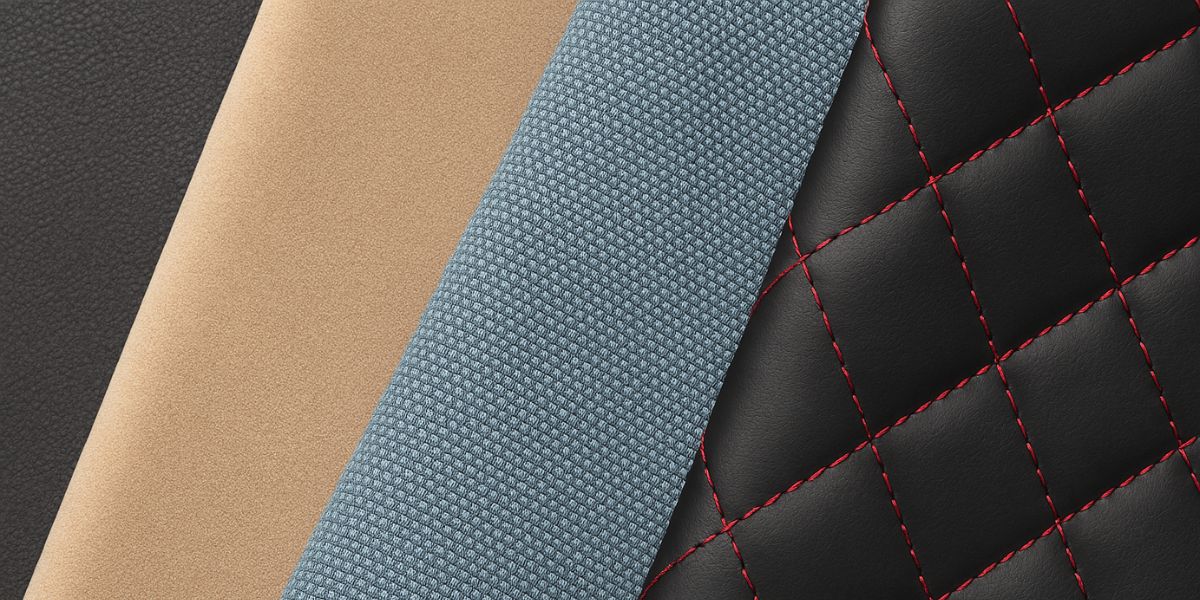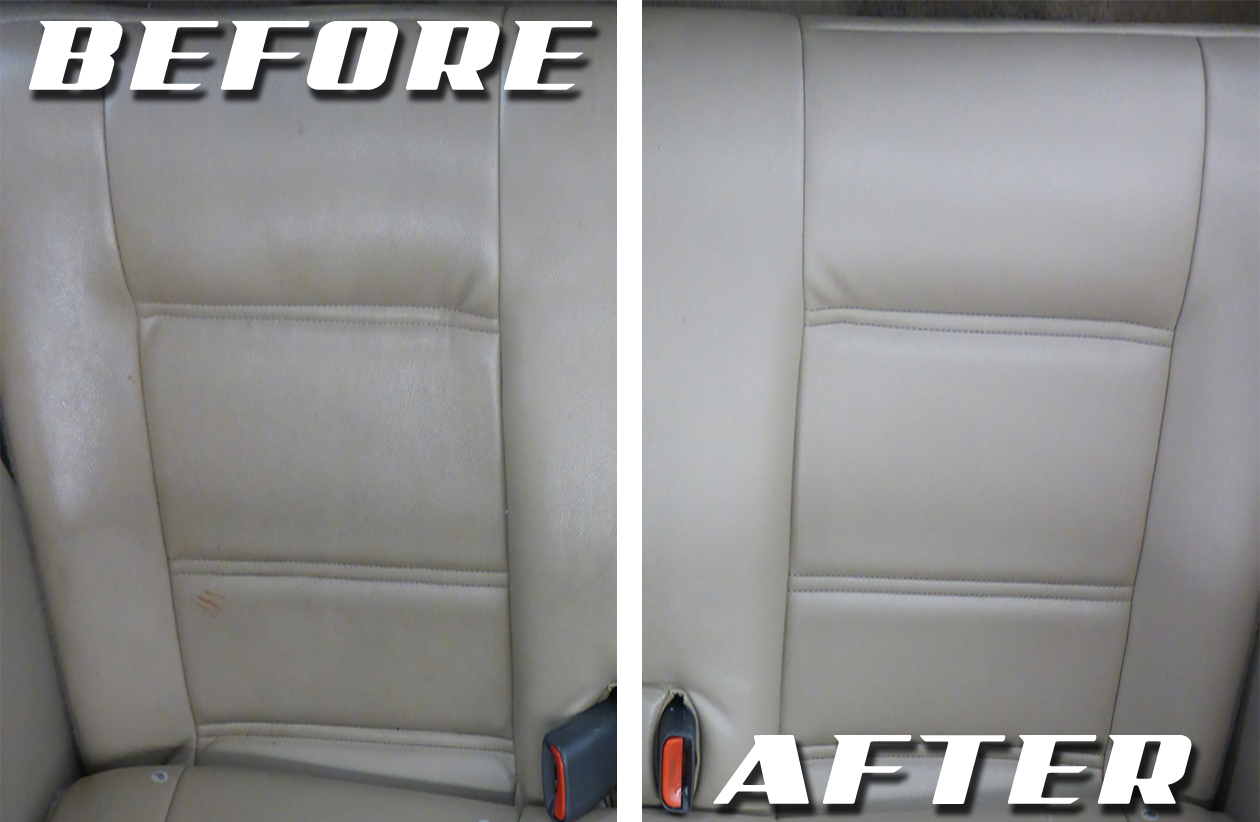That mysterious ring on your driver’s seat wasn’t there yesterday. Maybe it’s from a rain-soaked jacket, spilled water bottle, or morning dew seeping through a sunroof crack. Left untreated, these water stains transform into stubborn mineral deposits that scream “neglected interior.” The good news? You can eliminate 90% of water rings using household items before they become permanent eyesores. This guide delivers exact methods for your specific seat material—no guesswork, no professional detailing fees, and no risk of making stains worse. Within 30 minutes, your seats will look factory-fresh again.
Identify Your Car Seat Material Before Cleaning

Applying the wrong solution destroys upholstery. Water-based cleaners crack leather, while leather conditioners leave greasy marks on fabric. Verify your seat type in 15 seconds:
Spot-Test Your Seat Texture
- Fabric/Velour: Press your palm down—visible weave reappears when you lift your hand. Common in economy models like Honda Civics.
- Microfiber: Feels like soft suede but resists water absorption. Often found in premium trims (Toyota Camry XSE, Ford Edge).
- Leather: Cool to touch with natural grain patterns. Check for perforations along seatbacks (common in BMWs and Mercedes).
- Vinyl: Shiny, plastic-like surface that feels stiff. Typical in base-model trucks and older vehicles.
Critical First Step: Vacuum and Prep
- Vacuum seams and crevices with a brush attachment to remove grit that scratches fabric during cleaning.
- Blot fresh spills immediately with a dry microfiber cloth—rubbing pushes minerals deeper into fibers.
- Crack windows open before starting. Trapped moisture creates new rings during drying.
Never skip this: A Ford F-150 owner permanently stained beige microfiber by using vinegar solution meant for fabric seats. Material identification prevents $300+ reupholstery bills.
Soap and Water Fix for Fresh Water Rings (Works in 10 Minutes)
This method erases 80% of new stains before minerals set in. Use it within 24 hours of spotting the ring.
Exact Dish Soap Formula
- 1 tbsp Dawn Ultra (no scents) + 1 cup lukewarm water
Why lukewarm? Hot water cooks minerals into fibers.
Step-by-Step Stain Removal
- Dampen a microfiber cloth—wring until only slightly moist (excess water creates new rings).
- Blot from the ring’s outer edge inward using feather-light pressure. Stop when the cloth darkens.
- Rinse with distilled water on a second cloth to remove soap residue.
- Press a dry towel over the area for 60 seconds. Air-dry with doors open for 20 minutes.
Pro tip: For seats with foam padding (most modern cars), place a dry towel under the stained area before cleaning. It absorbs runoff that would otherwise trap moisture against the foam.
Club Soda for Light Mineral Rings on Fabric Seats
Club soda’s carbonation lifts calcium deposits without harsh chemicals. Ideal for faint white rings on cloth or velour.
How to Apply Without New Stains
- Pour club soda into a spray bottle (no added flavors).
- Mist the ring until damp—not wet. Oversaturation causes ring expansion.
- Scrub with a soft-bristle toothbrush using 2-inch circular motions for 15 seconds.
- Blot with a clean towel until no moisture transfers. Repeat if residue remains.
- Air-dry 15 minutes with cabin fan on low.
Warning: Never use on leather. A Volvo S60 owner turned a small ring into a 4-inch discoloration by applying club soda to perforated leather seats.
Baking Soda Power for Stubborn Dark Rings
When stains resist soap-and-water, baking soda’s mild abrasion lifts embedded minerals. Three methods target different scenarios.
Paste Method for Small, Dark Rings
- Mix 2 tbsp baking soda + 1 tbsp warm water into a thick paste.
- Test on seat back first—wait 10 minutes for color bleeding.
- Apply paste with toothbrush, covering ring edges by 1/4 inch.
- Wait 5 minutes (30 minutes for severe stains), then scrub in overlapping circles.
- Wipe with barely damp cloth, then blot dry.
Large Area Technique for Full Seat Panels
Dip a microfiber cloth into dry baking soda, then wipe the stain using straight lines (not circles). Removes rings without paste mess on wide surfaces like SUV rear seats.
Odor-Killing Finish
After any liquid treatment, sprinkle dry baking soda over damp fabric. Wait 20 minutes, then vacuum thoroughly. Eliminates “wet dog” smells from trapped moisture.
Vinegar Solution for Set-In White Crust on Fabric
For stains older than 72 hours with chalky residue, vinegar dissolves mineral crystals.
Correct Vinegar Mix Formula
- 1 gallon hot water + 1 cup white vinegar + 1 tsp dish soap
Hot water activates vinegar; cold water won’t penetrate deep stains.
Safe Application Protocol
- Dip a soft brush into solution, shake off excess (dripping causes new rings).
- Scrub in straight lines from top to bottom—circles create swirl marks.
- Rinse immediately with plain warm water cloth.
- Blot with microfiber towel until dry to the touch.
- Air-dry 45 minutes with windows down.
Critical caution: Vinegar lightens black fabric. Always spot-test inside a seat crease first. If color lifts, switch to baking soda paste.
Leather Water Stain Removal Protocol (Never Use Water)

Leather absorbs water like a sponge, causing irreversible cracking. Use this exact sequence:
Step-by-Step Leather Rescue
- Blot with dry chamois cloth—never paper towels (they leave fibers).
- Apply pH-balanced leather cleaner (Lexol) to a microfiber pad.
- Wipe in straight lines following the grain direction.
- Remove residue with a second clean cloth within 30 seconds.
- Condition immediately with Lexol Leather Conditioner.
Fix Salt Rings on Dark Leather
Mix equal parts distilled water and white vinegar. Dab once with cotton swab, wipe clean after 10 seconds, then condition. Never spray directly.
Dry Car Seats Properly to Prevent New Rings
90% of “stubborn” stains reappear because of improper drying. Follow these steps:
Triple-Dry Technique
- Blot with towel until no moisture transfers (press firmly for 90 seconds).
- Air-dry 20 minutes with doors open and A/C on fresh-air mode.
- Speed dry with hairdryer on cool setting held 6 inches away—move constantly.
Essential Fabric Guard Application
Once bone-dry, spray 303 Fabric Guard 6 inches from the seat. Hold for 2 seconds per square foot. Wait 24 hours before driving. Reapply every 6 months.
Prevent Water Stains Before They Form
Stop future rings with these proven habits:
- Keep a microfiber towel in your glove box—blot spills within 10 seconds.
- Shake rain-soaked items over door sill before placing on seats.
- Apply Scotchgard Auto after every deep clean.
- Check sunroof seals quarterly—replace cracked gaskets immediately.
When to Call a Professional Detailer
Stop DIY attempts if:
– Stains return after two full treatments
– You own Alcantara, suede, or vintage velour seats
– Leather shows white salt rings after cleaning
– Musty odors indicate mold in foam padding
Hot-water extraction by pros costs $75–$150 but saves $500+ in replacement seats. Look for detailers using McCulloch steamers—they reduce mineral redeposition by 90%.
Water stain removal flowchart:
Fresh ring → Soap/water blot → Air-dry
Light mineral ring → Club soda → Vacuum
Dark crusty ring → Vinegar solution → Triple-dry
Leather mark → Leather cleaner → Conditioner
Water stains vanish when you match the method to your seat material and act before minerals set. Keep baking soda, distilled water, and microfiber towels in your garage—you’ll fix 95% of stains before they ruin your interior. For persistent rings, professional extraction delivers showroom results without costly replacements. Your car’s seats shouldn’t broadcast last week’s rainstorm; with these exact steps, they’ll stay pristine mile after mile.





